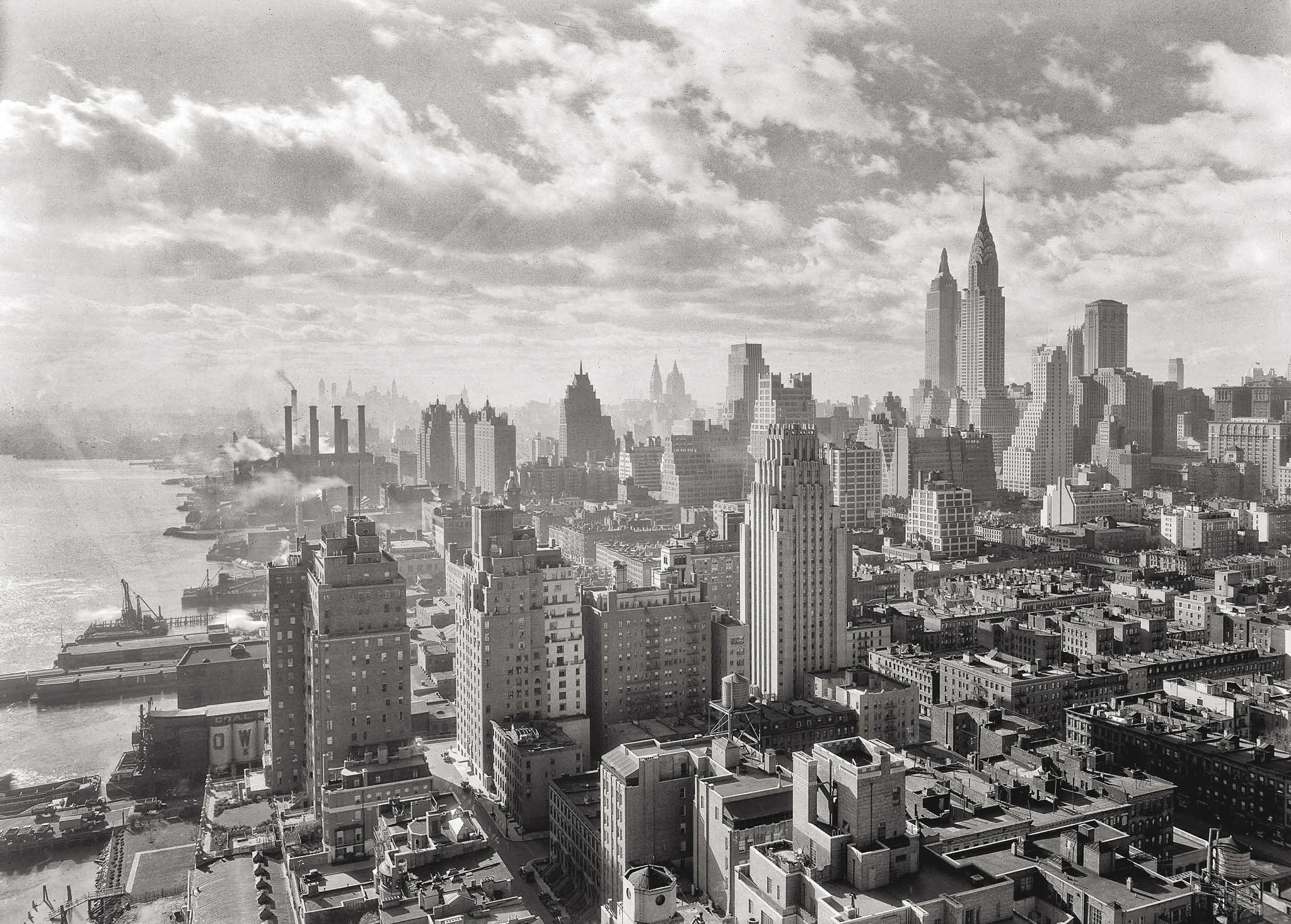A MAN DANGLED FROM a steel cable high above the city, struggling to fasten it in place. It would be used to hoist pieces of steel into the sky, constructing the Empire State Building. It was 1931, at the onset of the Great Depression. A photograph of the construction worker, taken by Lewis Hine, aptly represented a nation fighting to climb out of the steepest economic crisis it had ever seen.
From such a vantage point it was possible to see for miles in every direction: two and half miles northeast to the Hotel Ansonia, where ‘Abdu’l-Bahá first lodged upon his arrival in America; a few steps further east to Riverside Drive, where he had enjoyed many leisurely walks along the Hudson River; and, due south, the Church of the Ascension, the site of ‘Abdu’l-Bahá’s first public address in America. Somewhere in the faint cluster of buildings just this side of Little Italy, the Bowery Mission still stood, where ‘Abdu’l-Bahá had surprised the reporter Kate Carew by giving out hundreds of quarters to homeless men.
As Lewis Hine clearly documented in his photography, the city was more than a skyline. People shaped the buildings and were in turn shaped by them. Upon ‘Abdu’l-Bahá’s arrival, one reporter heard him call New York a “beehive.” But the beehive was only just starting to hum. In the century after 1912, New York City would go on to become the cultural, commercial, and communications capital of the world.

The Great Migration, for instance, during which millions of African Americans flocked from the south to north, changed the cultural landscape of New York. Harlem became a center for black literature and art that promoted civil rights and social equality. Opportunity: A Journey of Negro Life, edited by Charles S. Johnson and The Crisis, edited by W.E.B. Du Bois, published many African American writers. The Harlem Renaissance, as the movement went on to be called, also attracted white Americans who were interested in sponsoring and collaborating with Harlem’s emerging talent.
Throughout the century, racial unity was not just an issue between blacks and whites, but included all immigrants to America, many of whom were already struggling in underpaid factory jobs in 1912. They included thousands of Irish and Germans, followed by Russian Jews, Greeks, Poles, and Italians. Each group was met with suspicion, was thought of as un-American, and had to advance in the face of opposition. But it made America a testing ground for the racial and religious unity that ‘Abdu’l-Bahá encouraged. “In the creative plan there is no racial distinction and separation such as Frenchman, Englishman, American, German, Italian or Spaniard; all belong to one household,” ‘Abdu’l-Bahá said to the International Peace Forum in New York. “These boundaries and distinctions are human and artificial, not natural and original.”
Just as ‘Abdu’l-Bahá had spoken of the need for an international council with a mandate for peace, an early version of it emerged, making an unlikely neighborhood in New York City its headquarters. In 1912, down 43rd Street in Turtle Bay, slaughterhouses, packing sheds, cattle pens, and noisy railroad piers lined the banks of the East River. By the 1920s fashionable townhouses had taken over, and a large communal garden ran through the backyards of the homes on 48th and 49th Streets. When the United Nations was formed after World War II, its Modernist headquarters rose in Turtle Bay between 1949 and 1952, replacing six blocks of slaughterhouses. Today, on clear mornings, the sunrise reincarnates itself in the UN Secretariat’s glass facing, bathing the passersby on the East River in a wash of gold.

“I am greatly pleased with the city of New York,” ‘Abdu’l-Bahá said on his first day in America, “Its harbor entrance, its piers, buildings and broad avenues are magnificent and beautiful.” But he had an admonition. “As New York has made such progress in material civilization, I hope that it may also advance spiritually. . . .” Spiritual civilization is not as easy to see as material. It requires perception and the ability to look beyond outward appearances, to the selfless acts of millions of people that are often forgotten by history.
But just as ‘Abdu’l-Bahá had stood up for women’s emancipation as he pulled into New York harbor, seated an African American lawyer at the head of his table in Washington, argued for peace to an arms dealer, spent the week with a former convict, wiped away the tears of a reverend, met with children, servants, students, government officials and crowds in the thousands, he expended his energy to the utmost, planting the seeds of what he called a spiritual civilization. “This timely seed,” ‘Abdu’l-Bahá told an audience on April 12, “when planted in the hearts of the beloved of God, will be watered by showers of divine mercy and warmed by the sunshine of divine love. Its fruitage and flower shall be the solidarity of mankind, the perfection of justice and the praiseworthy attributes of heaven manifest in humanity.”







